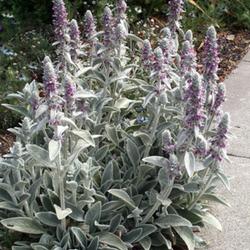Shortly after moving to southeastern PA, I watched 30 deer gracefully ravage my new garden like starving ballerinas at an all-you-can-eat buffet. I asked a neighbor: “What don’t deer eat?” After a significant pause he replied: “Concrete…if it’s in large chunks.”
Many years of garden experimentation followed, and luckily I found answers to my question that were lovelier to look at than large chunks of masonry.
Trees are the tricky thing. If you are willing to look at a sapling encased in a 6ft tall wire-netting cage, for as many years as it takes for the lower branches to get above browse height, then you can plant anything. On the other hand, you can opt for something that you will require gloves to handle, such as Juniperus rigida (needle juniper), which has painfully sharp leaves and grows into an elegant, slightly weeping, evergreen tree.
Boxwood is a less boring evergreen than you might think. Varieties range from the diminutive globe of
Boxwood (Buxus microphylla 'Compacta') to tree-sized B. sempervirens var. arborescens. In-between sizes, such as the rounded hybrid
Boxwood (Buxus 'Green Mountain'), column-shaped
Boxwood (Buxus sempervirens 'Graham Blandy'), and variegated-leaf varieties such as
Boxwood (Buxus sempervirens 'Aurea Pendula'),
Variegated Boxwood (Buxus sempervirens 'Elegantissima'), and
Boxwood (Buxus sempervirens 'Marginata') fill many a niche, with nary a nibble from the deer.
What about flowering shrubs, you may ask? If you need a large shrub with grey-green leaves,
Fountain Butterfly Bush (Buddleja alternifolia) is covered in lilac blooms all down its pendulous branches in early summer. It attracts butterflies in the same way as its relative
Butterfly Bush (Buddleja davidii). For late summer bloom, there are
West Clandon Bluebeard (Caryopteris x clandonensis) and
Russian Sage (Salvia yangii), both with blue flowers.
Shrubby Cinquefoil (Dasiphora fruticosa) is an indispensable small shrub that blooms from early summer onward. Besides the one with bright yellow flowers usually seen in public low-maintenance plantings, there are more sophisticated varieties with flowers of pure white, primrose yellow, pale pink, and apricot shading on red.
In the perennial garden, you may plant aromatic herbs. All kinds of artemisia, oregano, thyme, sage, rue, and rosemary are too pungent for deer to eat. They don't like densely hairy foliage either, so anything with silvery or velvety leaves like
Lambs' Ears (Stachys byzantina) is usually safe. Peonies and
Purple Mullein (Verbascum phoeniceum) are left alone for some reason I do not know. Lastly, there are poisonous plants, if you are brave, and don't have small children. The Digitalis (Foxglove) family provides us with many perennial or biennial species, with yellow, pink, pinkish-brown, and tan and white flower spikes. For spring bulbs, forget tulips and plant
daffodils. For fall bulbs, plant
Colchicum.
Experiment with plants that have aromatic foliage, long spines, rough leaves, and you will find much more that deer will not completely devour, although they will of course take a bite and then spit it out.
